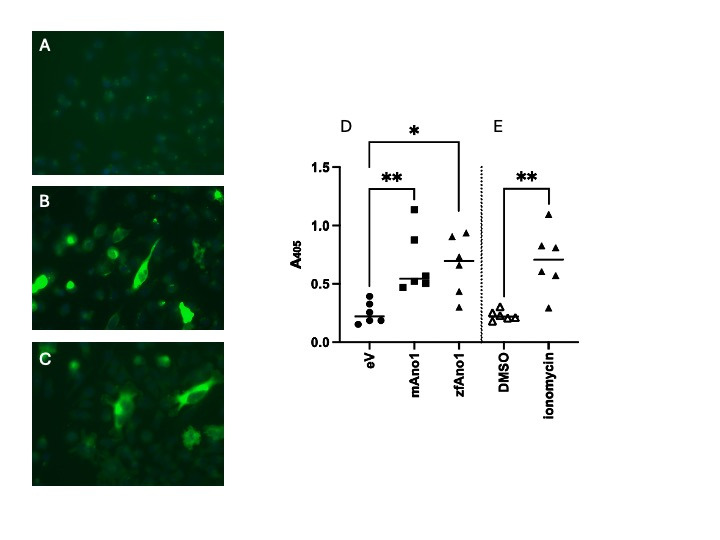Evaluating the molecular function of zebrafish Anoctamin 1a.
microPublication biology
Pub Date : 2025-07-30
eCollection Date: 2025-01-01
DOI:10.17912/micropub.biology.001706
引用次数: 0
Abstract
Calcium-activated chloride channels (CaCCs) regulate key physiological processes like epithelial secretion, sensory transduction, gastrointestinal pacemaking, and muscle contraction. Zebrafish ( Danio rerio ) are genetically similar to humans, easily manipulated, and are a valuable model organism. We cloned zebrafish Anoctamin 1, a putative CaCC gene, expressed it in mammalian cells, and confirmed its function via halide flux assays. The channel conducted anions and responded to calcium, verifying its role as a CaCC. These findings confirm the functionality of zebrafish CaCCs and lay the groundwork to use the organism to model human physiology and disease.

斑马鱼Anoctamin 1a分子功能的评价。
钙激活的氯离子通道(CaCCs)调节关键的生理过程,如上皮分泌、感觉转导、胃肠起搏和肌肉收缩。斑马鱼(Danio rerio)基因与人类相似,易于操纵,是一种有价值的模式生物。我们克隆了斑马鱼Anoctamin 1,这是一个假定的CaCC基因,在哺乳动物细胞中表达,并通过卤化物通量测定证实了它的功能。该通道传导阴离子并对钙离子产生反应,验证了其作为钙离子的作用。这些发现证实了斑马鱼CaCCs的功能,并为利用该生物模拟人类生理和疾病奠定了基础。
本文章由计算机程序翻译,如有差异,请以英文原文为准。
求助全文
约1分钟内获得全文
求助全文

 求助内容:
求助内容: 应助结果提醒方式:
应助结果提醒方式:


